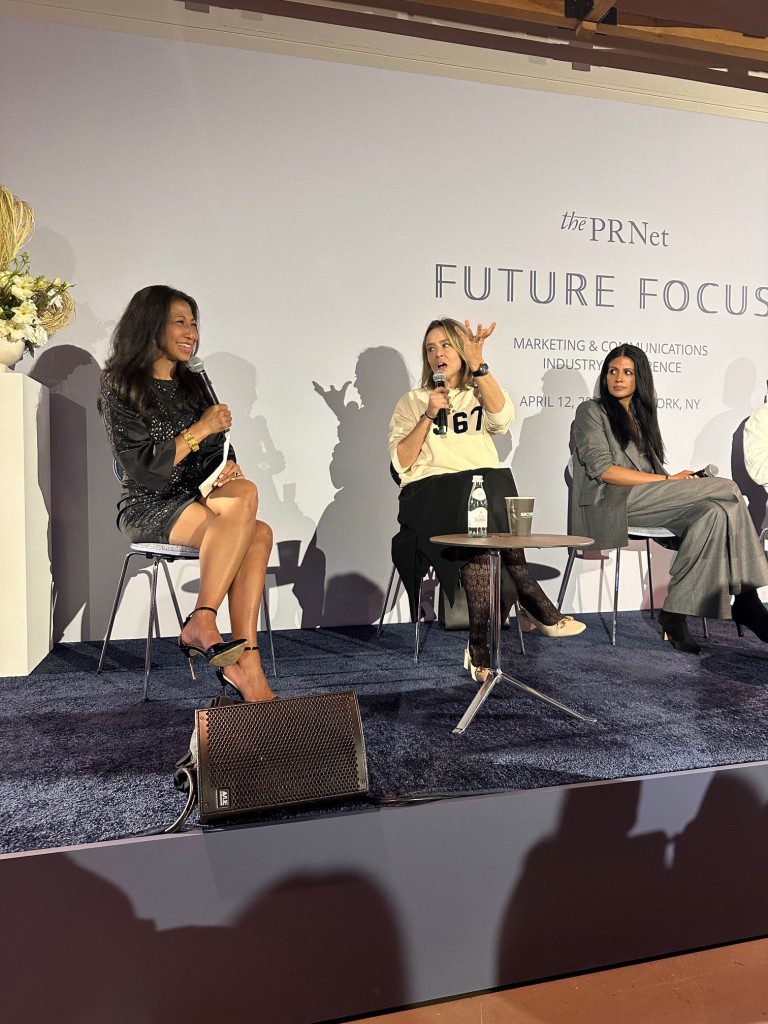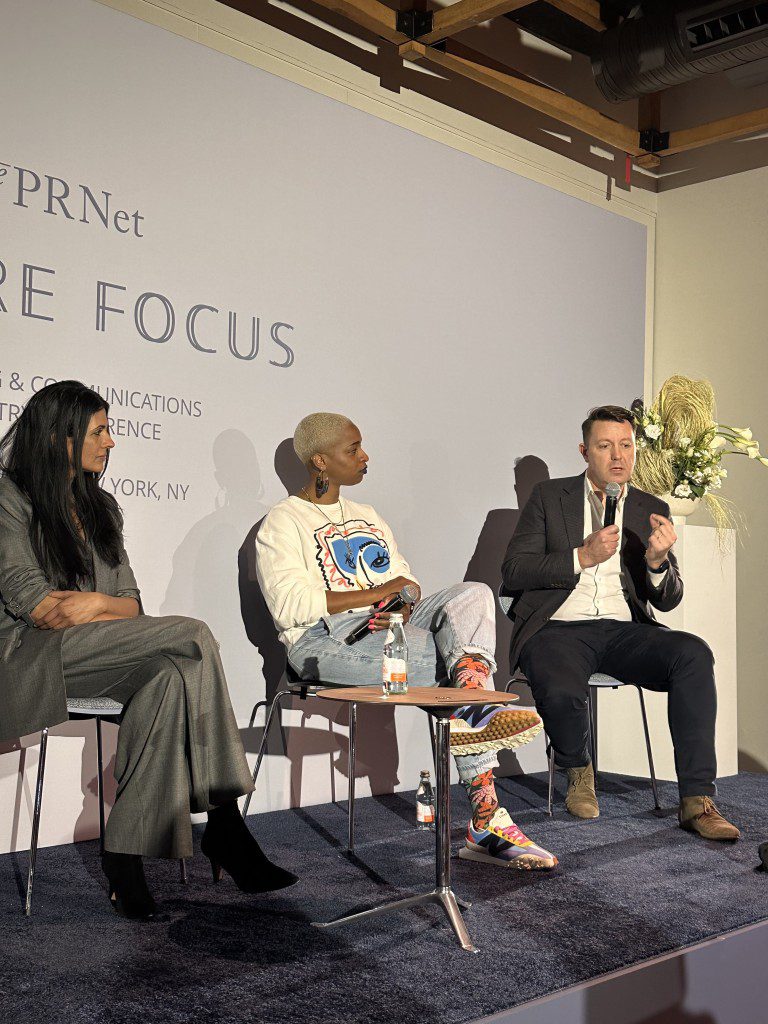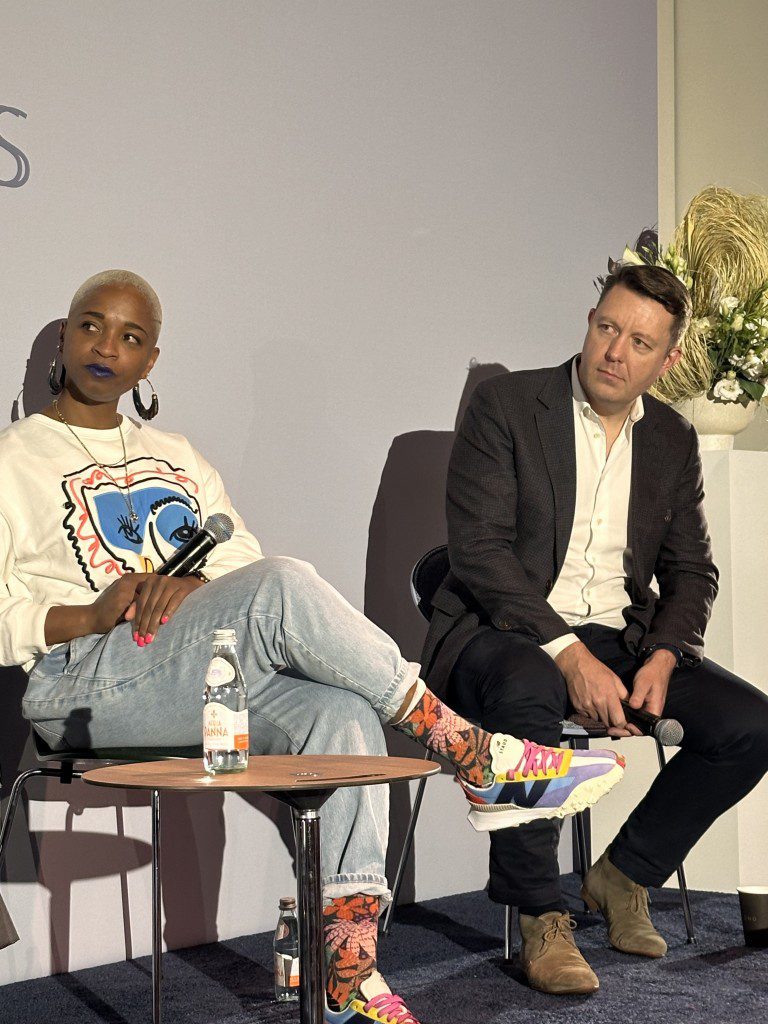News and Insights
The Case for Brand Marketing in Challenging Times
June 3, 2024
While the tension between brand building and performance marketing is common industry fodder, the debate always intensifies during volatile economic conditions. In the last six months, headlines heralding shorter CMO tenures along with exponentially greater responsibilities have reached a fever pitch. Marketers are under pressure to steer the brand to drive growth in the face of seismic consumer shifts, channel fragmentation and tech disruption. With the increased pressure for revenue comes cost cutting, and brand marketing is often the first place to feel the axe. Yet while the allure of pursuing efficient, measurable tactics and immediate results is understandably appealing, where does that leave your brand once the tides turn?
Recently, I had the privilege of moderating a panel at The PRNet’s Future Focus conference and led a provocative discussion about the evolving landscape of brand marketing. The PRNet is a global network for leading marketers, publicists, entrepreneurs and media in the lifestyle industries. The panel was titled ‘Is 2024 the Year of Brand Marketing?’ with C-suite panelists Ana Andjelic, ex-chief brand officer at Esprit and Banana Republic; Samina Virk, North America CEO at Vestiaire Collective; Crystal Vinisse Thomas, vice president and global brand leader at Hyatt Hotels Lifestyle & Luxury Brands; and Colin Kavanagh, chief marketing officer at Pernod Ricard, providing expert insight into the strategies and approaches that will define the year ahead.
This wide-ranging and often humorous conversation was loaded with examples and useful takeaways to help professionals make the case to business stakeholders for brand building. Here’s a recap of my biggest aha! moments:
When the Going Gets Tough
Building a brand differentiates you from competitors, protects you from commoditization and drives preference. But it’s easy to be Everything Everywhere All at Once (thank you, Hollywood) when times are good and budgets are abundant. With economic uncertainty comes tough choices, and a more balanced approach is required for modern brand building. The panelists agreed that when sales are down, choosing between short-term performance vs. long-term brand building needn’t be a zero-sum game. Performance marketing is like stepping over a dollar to pick up a dime, whereas brand building is a long-term proposition incorporating a wide variety of difficult-to-measure consumer touch points, and the fruits of your labor may take time to ripen.

Ana remarked that if brand building were redefined as a strategy of cultural influence, including collaborations, merchandising, creative partnerships, fandom building, content, entertainment, etc., then marketers are impacting all levels of the sales funnel. Samina mentioned that if you’re relying on performance marketing, but you’re not showing up first in search, or somebody is a little cheaper, you’ve already lost them.
This is the squishy but delicious soft center of building a brand: it’s harder to measure, but the rewards are tasty.
What Gets Measured Gets Done
Measurement used to be basic, if not one dimensional: MQLs/SQLs, ROI, customer lifetime value and the like. Today’s CMO is responsible for that and far more. Elusive and complex KPIs like omnichannel attribution and delayed metrics with brand building, delivering creative vision and quantifiable results. Being able to explain what works.
Marketers are charged with defining brand marketing, articulating to stakeholders what it does— and does not—do, and setting clear expectations. For instance, Crystal shared that there’s been so much innovation in measurement that it’s vital to measure the right KPIs, which may be different for every brand in a company’s portfolio, according to each organization’s goals and their consumer landscape. Samina discussed Vestiaire’s mission to transform the fashion industry toward a more sustainable future by empowering the community to drive the change—and being able to measure that change—which is a highly customized set of metrics.
The Ever-Expanding (CMO) Universe
Brand marketing has become more important than ever; from traditional advertising and awareness building to broader, holistic responsibilities that drive business growth. This has led to a shift from specialists to generalists, who are often better equipped to see the whole, rather than only the parts. Colin mentioned that generalists make up just 30% of his total marketing team, while the remainder are specialists in content creation, digital marketing, influencer relations, data science, even generative AI. They’ve built great capability in demand science and marketing effectiveness, but those 30%, he believes, will become the most important roles as they’re focused on building solid foundations and understanding their customers.

Which leads me to another takeaway: CMOs are increasingly charged with breaking down silos across the organization, building the connective tissue that allows individual departments to see their contributions building customer affinity and furthering the success of the enterprise. Colin remarked that Pernod Ricard is getting marketing closer to the business, and the brand marketing role can really drive that. Ana observed that the job of a CMO used to be simpler: create awareness and consideration, but then after purchase, it was someone else’s job. You can’t pass the buck anymore, she said. How you are communicating the brand promise, brand values, its narrative, doesn’t stop after the sale. When done right, brand marketing connects product, merchandising, commercial planning, etc., and everyone is part of the process and sharing accountability.
Tell Me a Story
Panelists emphasized the importance of authenticity, cultural relevance and consistency in brand marketing, and shared their experiences and insights on effective narrative strategies.
More than a logo, product or service, a brand is a promise, an experience, a mission, and the panelists all stressed the importance of ensuring that narratives convey the organizational values, express the brand’s tone of voice and a clear understanding of its raison d’etre. Samina shared how Vestiaire’s Long Live Fashion tagline positions it as a purpose-driven business, which helps drive its impact. Even FINN’s own narrative, a global independent marketing and communications agency with a heart and conscience, attracts clients and talent through shared values. And it goes both ways: Crystal observed that, in a period of economic downturn, cutting costs in the very categories that make the experience what it’s supposed to be, while being over reliant on brand marketing, is a concern. It’s not enough to merely say it; the organization must live it.

Every brand says it wants to be culturally relevant. But what does that mean—and how do you achieve it? Brands with compelling cultural narratives participate in culture. Ana observed that culture is a story that we tell ourselves to make sense of the world. Samina discussed how Vestiaire Collective used Black Friday momentum to promote an environmental message, “Think First. Buy Second,” highlighting what the more than 90 million tons of waste that’s generated by the fashion industry would look like if it was in our backyards. Colin’s very relevant example around the Jameson brand for St. Patrick’s Day, which this year fell on a Sunday, showcased how the marketers at Pernod Ricard created a “new” holiday called St. Patrick’s Eve, partnering with well-known SNL comedians, Michael Che and Colin Jost, who helped promote a St. Patrick’s Eve ball drop in Times Square.
Skate to Where the Puck Will Be
Finally, a big theme among our panelists was the idea of understanding where things are going, while recognizing where they are now. That’s a tall order: seeing around corners is a superpower that’s mastered over time and requires vigilance in, as Colin said, having one foot very firmly in the present and the other foot in the future. Staying on top of industry advancements, cultural trends, technology innovations and measurement enhancements is mission critical to navigating volatility, staying relevant and building a brand that lasts.
